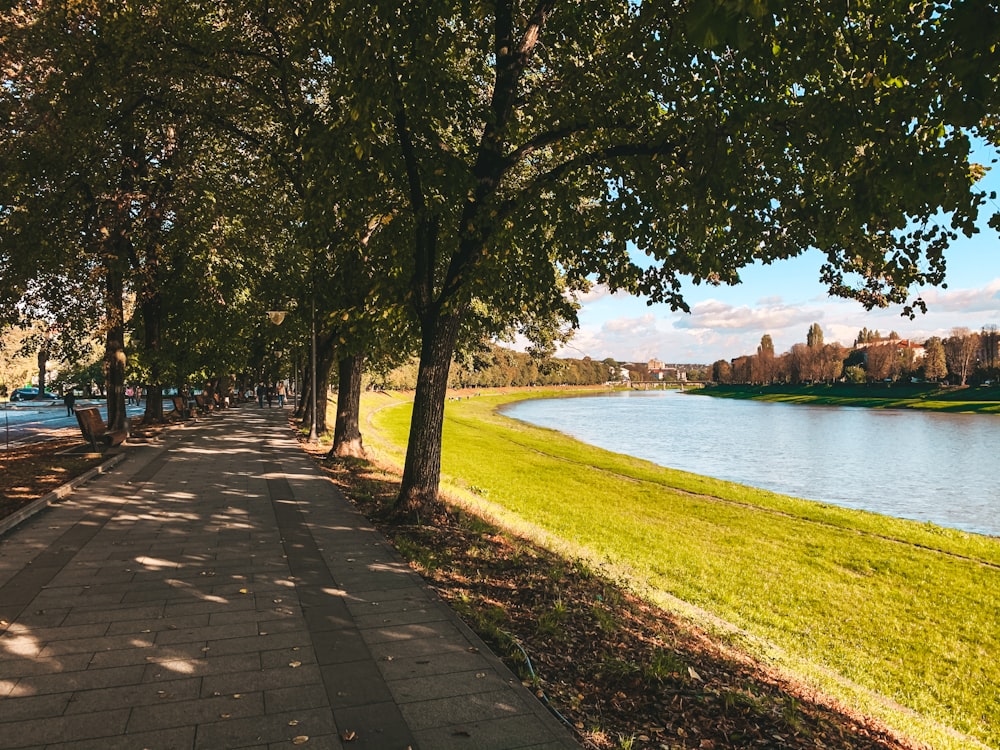Can These Emerging Technologies Help Us Kick Our Carbon Habit?
A Rolling Stones article from earlier this year takes a look at seven emerging technologies on the horizon that can help make “modern living more sustainable.” I’m a firm believer that technology cannot and will not save us from the issues we’ve created but it can definitely assist us in living comfortably while in harmony with our surrounding environment. My curiosity led me to investigate whether these solutions are actually plausible and could be applied to our everyday lives.
Today, the most popular greenhouse gas (GHG) that’s emitted into the atmosphere is carbon dioxide (CO2) and this is mainly due to anthropogenic, or human causing, behaviors. This abundant gas is directly affecting our atmospheric conditions because a lot of our day-to-day processes and technologies rely on fossil fuels as an energy resource.
According to the 2021 Intergovernmental Panel on Climate Change (IPCC) report, “it is unequivocal that the increase of [greenhouse gases] in the atmosphere over the industrial era is the result of human activities and that human influence is the principal driver of many changes observed across the atmosphere, ocean, cryosphere, and biosphere.”
It’s quite clear that we need to make some changes in the way we operate as a society and the Rolling Stones article opens the door to some potential solutions and not just the “latest and greatest” technological band-aid to heal the wounds we’ve inflicted on our home planet. I will dive into some of these emerging technologies, list some of the benefits and discuss whether it’s something that could really help or if it’s another feeble attempt by the tech sector to fix yet another anthropogenic problem.
Green Cement
The world produces 4 gigatons of cement annually to meet the demands that come with new construction projects, resulting in 2,400,000,000 – 4,000,000,000 tons of CO2 emitted every year! This is 8% of total global emissions and according to Columbia University’s Earth Institute the cement demand is increasing about 2.5% every year. With such a high number of buildings being built every day, have you ever thought about how cement is made? Cement is a binding agent and main ingredient in concrete which is a critical component in foundations, structures, roads, bridges, highways, embankments, and so much more. The production of clinker, the main component of cement, is a combination of limestone and clay substances heated at high temperatures of 1400⁰C (2552⁰F) which releases 0.6-1 ton of CO2 for every 1 ton of cement produced. Multiply this by the annual demand and, in the worst case scenario, we are looking at CO2 emissions equivalent to 4.42 trillion pounds of coal burned.
The concept of supplementary cementitious materials (SCMs) is challenging concrete manufacturers to come up with ways to lower CO2 emissions and incorporate carbon capture, utilization and sequestration (CCUS) practices. One cement company that’s been doing extensive research and has created a green solution to address the SCM challenges is Solidia Technologies.
The process of creating their proprietary cement has the potential to eliminate 1.5 gigatons of CO2 and save 3 trillion liters of water. On the other end, they are utilizing CO2 in their curing process by mixing their cement with CO2 instead of water which will yield a calcium carbonate and silica cement that takes less time to harden compared to typical cement. I hope this gets rolled out soon and can help folks at construction sites use more green solutions.
Low-Methane Cows
Zelp, a UK-based company has created a way to convert methane from cows into oxygen and “less harmful” CO2. The cows wear a mask just above their mouths and it will act like the catalytic converter of a car where the small solar-charged batteries will suck up the burps and trap them in a chamber with a methane-absorbing filter. Once the filter is saturated a chemical reaction takes place and turns the methane into CO2 which is then released into the atmosphere.
I like the idea of lowering methane emissions because compared to other greenhouse gases it’s 85 times more effective at trapping heat in our atmosphere over time. However, I’m struggling to see this as an effective and viable solution because even after you put the mask on the cow you still have CO2 being emitted along with the other methane particles that potentially won’t get captured by the mask. The agriculture industry is a primary source of global methane emissions but if we were to look at the root cause of why this industry produces so much methane, we would have to look at the way humans play a part in this. Cows grazing on monocropped land combined with an over-producing meat and dairy industry has led to an obscene amount of cattle worldwide. As a solution, if we were to be more conscious about the way we farm, for example rather than large industries producing our food, we can create local systems with personal and community gardens which would create more autonomy for people, help support local farmers and eventually help lower the risk for mass food waste to occur.

Being part of the California Climate Action Corps, I worked with Oakland-based organizations and volunteers to recover tons of meat, produce and other food items from a local food delivery warehouse. If we didn’t recover this food it would’ve been added to the waste stream, dumped in a landfill and as it decomposes over time it would create a steady flow of methane. So while I think we should definitely look at the methane emissions from cows and use these masks, we have just as much methane emissions coming from the waste, oil and gas industries that can have just as heavy of an environmental impact as the agriculture industry.
Tree Corridors
In most cities worldwide you will find that there are more concrete sidewalks and buildings than there are trees, and this lack of greenery can lead to a phenomenon called urban heat islands. This is a fancy term to explain when a city gets so hot that it creates heat waves and forces people to stay inside and blast their air conditioners and fans to keep cool. During this time the energy used to cool cities down leaves us with higher carbon emissions and nothing to capture it (i.e. trees and other plants). Also for the people who can’t stay home or aren’t as fortunate to have central air conditioning, they are compromising their health and comfort.
In Medellín, Colombia they’ve planted more than “350,000 trees and shrubs since 2016 to create 30 shaded ‘green corridors’ that have reduced urban temperatures by more than three degrees.” Having green spaces and tree corridors in cities especially would help lower the intensity and effects of urban heat islands.

On Arbor Day this year, I had the privilege of helping 100K Trees for Humanity, a local organization in Alameda, CA whose mission is to work with volunteers to plant trees and help cut carbon emissions. This organization is encouraging and working with Alameda residents to take steps towards achieving their counties’ carbon reduction goals and you can do the same in your community! Whether it’s through a volunteering gig or visiting your neighborhood nursery, find any and every opportunity to plant trees in your area. Carry on with the green corridors please and thank you!
Floating Solar
Ever since solar array farms and harnessing solar power have hit the market, it has made the future a lot brighter because that means we no longer need to heavily rely on fossil fuels on a large scale. The main challenge is that large solar installations require large sites but in countries with dense populations that is not as easy to do. Not only do some of these countries lack the space, in some cases they may have access to land but it’s too expensive due to land owners looking to make a profit instead of working collaboratively to supply their respective region with quality carbon-less energy at an affordable rate.
This is where floating solar can be a great solution and South Korea is currently taking advantage of this opportunity. They have decided to provide 41 MW of power to a town of 60,000 people by installing a floating solar plant near a hydroelectric dam that can create hydropower at night. This joint system is an advantageous blueprint for other countries to utilize and apply because apparently it has the potential to yield copious amounts of energy, on a terawatt scale, according to the World Bank. If your community is exploring floating solar, it would be helpful to research the maximum capacity of how much of this energy can be used instead
Tidal Energy
The power of water strikes again! Or at least that is the hope since tidal energy is the act of harnessing the power of turbulent oceanic waves. In the Bay of Fundy in Nova Scotia, which is famously known for its high tides, Sustainable Marine launched the world’s first floating tidal energy platform. This platform is equipped with 6 submerged turbines that automatically pivot to ensure the turbines are in the correct direction to catch the tides.

The main challenge is that the ocean is a mysterious life force and has the ability to batter and destroy the underwater structures, making tidal energy a concept that is yet to be trusted. If the project in Nova Scotia is able to successfully supply energy to nearly 3,000 homes in the area then, this could raise the stakes and help this energy source emerge as a reliable and stable technology on a large scale. The only thing we can do now is wait and see how this project unfolds and hope that all the water benders unite and create some gnarly waves.
Most of these technologies are still in the research and development phase and haven’t been rolled out yet, so while there’s still some time for them to be put through trials, I wonder whether they can actually help us solve the global carbon crisis. Is there more to be done? Most definitely, this is good progress but it’s up to us to continue exploring, discussing, and implementing ways to be more proactive Solutionists in our communities to protect our planet home.


Leave a Reply